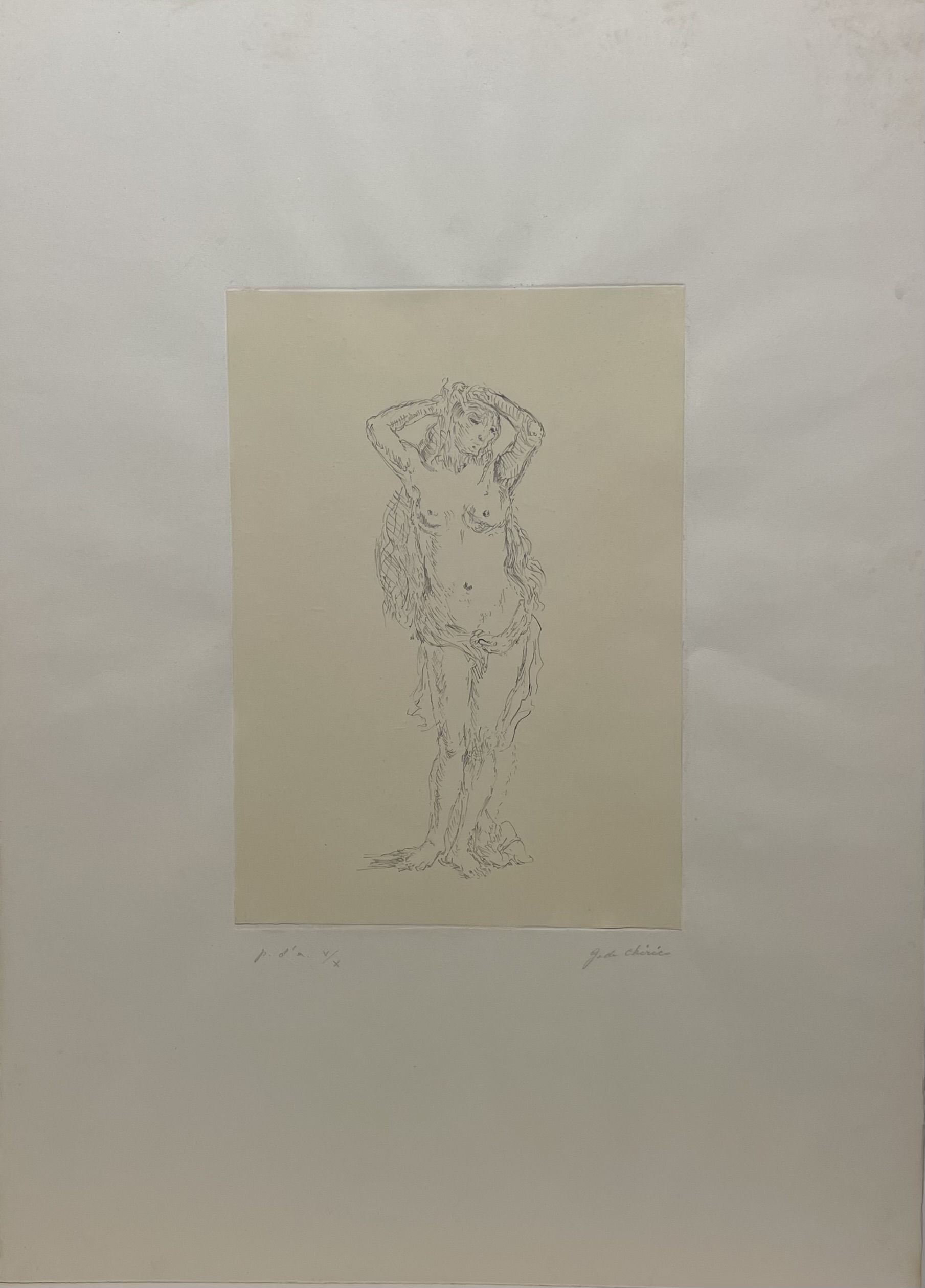Nudo, 1969
Giorgio De Chirico
Available
€2,640
Please select a copy before adding to cart
IQONIQ collaborates with renowned historical galleries in the Italian and international art scene to ensure that every print is meticulously verified and certified. Our dedication to transparency and quality allows us to offer artworks of proven value, enriching our clients’ collections with unique, authentic pieces of verified origin.
For more information on our provenance verification procedure, click here.
Description
Provenance: Spirale Milano
Dimensions: 70 x 50 cm
Year: 1969
Product conditions: Mint
Signature: Pencil signature
GIORGIO DE CHIRICO
Giorgio de Chirico was born in Greece, in Volos (in the region of Thessaly). However, the city to which De Chirico was probably closest was Ferrara: the artist moved to the Emilian city after the beginning of World War I. Intent on renewing Italian art by opening it to the experiences that were forming in early 20th century Europe, a great many Italian artists at the turn of the century chose to leave Italy for some time to seek new insights elsewhere. Among these “cosmopolitan” artists can also be counted Giorgio de Chirico (Volos, 1888 – Rome, 1978), who stayed in Paris between 1911 and 1915 just as the French capital was also the… European art capital. De Chirico was also strong in open Mediterranean culture, which he had also acquired through his birth (the artist was born and lived for a long time in Greece), and by staying in Munich he had moreover come into contact with German art. From these experiences, De Chirico matured the need to develop a new language, which proved to be among the most original and also among the most enigmatic of the twentieth century.Read More

